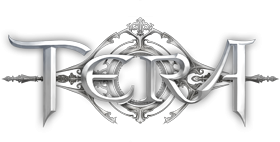ZAM Discusses TERA Westernization with Brian Knox
We sat down with TERA's senior producer to get some details on the process behind bringing the game to a Western audience.

In the latest edition of En Masse Entertainment's Race and Class Series, the team briefly touched on what it means to Westernize TERA for a North American and European audience. Basically, the short paragraph explained that En Masse wants their players to feel like TERA was made for them.
We wanted to know more about the Westernization process, so we decided to go straight to Senior Producer Brian Knox to discuss the similarities and differences between the Korean and NA/EU versions of the game. Miric, our TERA content manager, talked with Knox about all sorts of topics, ranging from the storyline to gameplay. Find out what Knox had to say after the jump!
ZAM: Before we get too specific with our questions, could you define exactly what "Westernization" means to En Masse and TERA?
Brian Knox: Westernization refers to our process of adapting a game to fit the Western market. In some cases, text localization and new marketing assets are all that are needed. Other times, specific game mechanics and features require tweaking for the market. Gamers play differently around the world, and as the North American publisher, we need to ensure the game will be fun for our market.
ZAM: We are already aware that TERA will be story driven, and that it will have a core storyline in which players will play an integral role. Will the Western version of the game alter the plot so it is more relatable to the Western culture? Could you give us any examples?
Knox: We developed TERA’s overall plot shoulder-to-shoulder with our counterparts at Bluehole Studio, so the big picture is consistent no matter where you play. The presentation of that plot, though—the storytelling techniques, characters players can identify with, methods of world-building, style of pacing—that’s what we’re building for Western gamers. You won’t get a different plot. You’ll get characters with authentic personalities and motivations that propel the action forward.
ZAM: Will the Western version of the game be updated in conjunction with the Eastern version, or will it evolve independently?
Knox: Yes, the game will be updated in conjunction with the Eastern version; however, some features may evolve according to Western preference. Feedback from our community and from our team here at En Masse has always contributed to new features and advancements in TERA. The key is to offer choices to all users as we continue to evolve the game.
ZAM: Will the races of TERA be altered in the Western version of the game in either appearance or function?
Knox: We’ve been working with the development team to create a global game, and we’ve had considerable input on TERA’s races during the development process. Humans, amani, and baraka seem to appeal more to Western players, while poporis, elins, and elves have more of an Eastern appeal, but we expect all the player races will find fans throughout the world—just as TERA’s graphics, storyline, and combat have done.

ZAM: Are there any major class changes that we could expect to see in the Western version of the game versus the Eastern? More specifically, will any fundamental changes in play style or role be made?
Knox: There will definitely be some differences in our version, but most of those will come from territory-specific player feedback. We expect the Western version to be balanced for our audience. We’re grateful that the Korean release of TERA gave us the opportunity for a large-scale balance test.
ZAM: Along the same lines as the previous question, will any of the class skills be reworked from their Eastern iterations to adhere to a more Western gameplay style?
Knox: At its core, TERA is an action MMO which, by its nature, has a strong appeal to Western players. With class skills, we’re focusing our adjustments more on bugs, naming, and balance issues to ensure they offer players the best possible experience.
Continued on Page 2.





